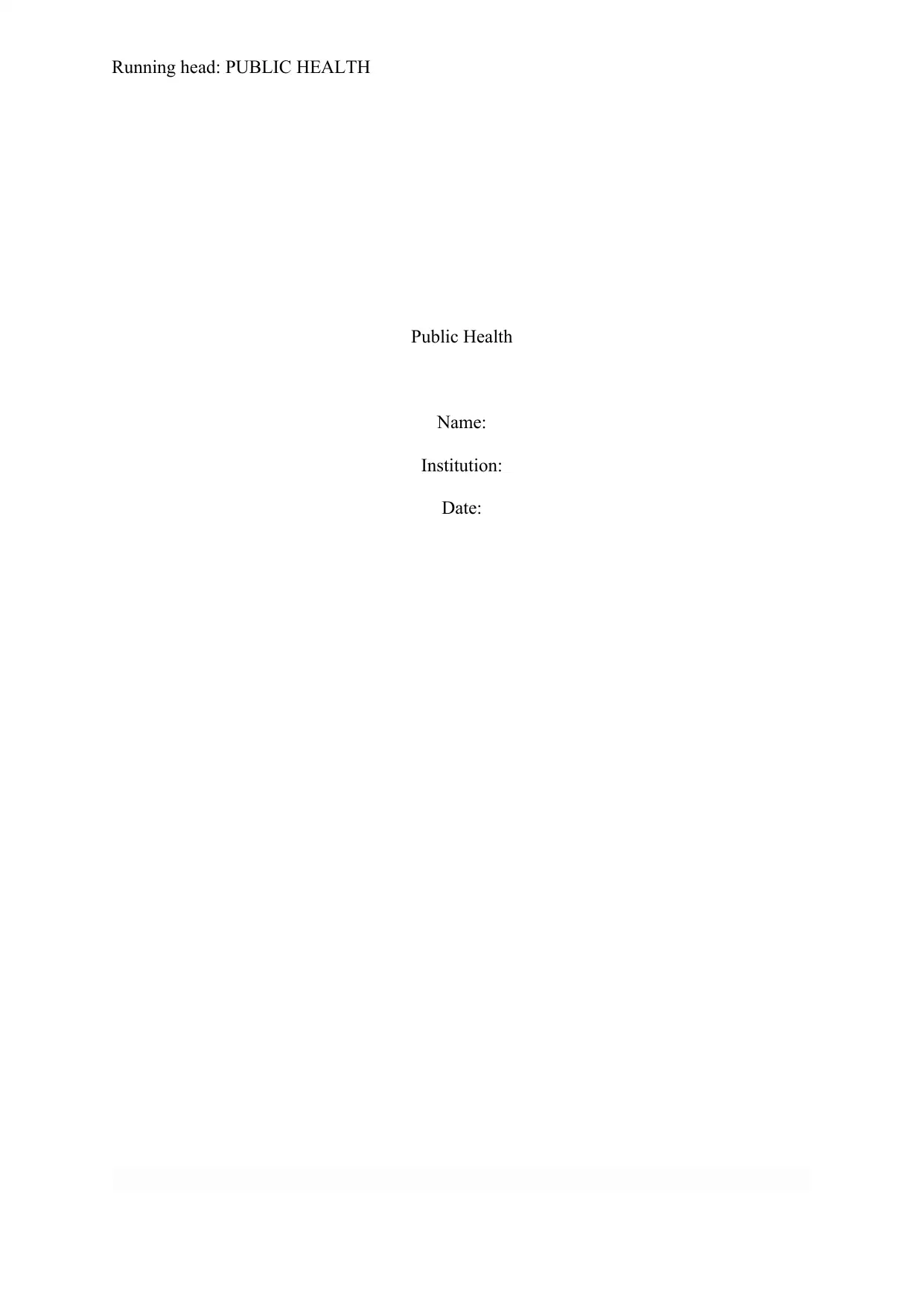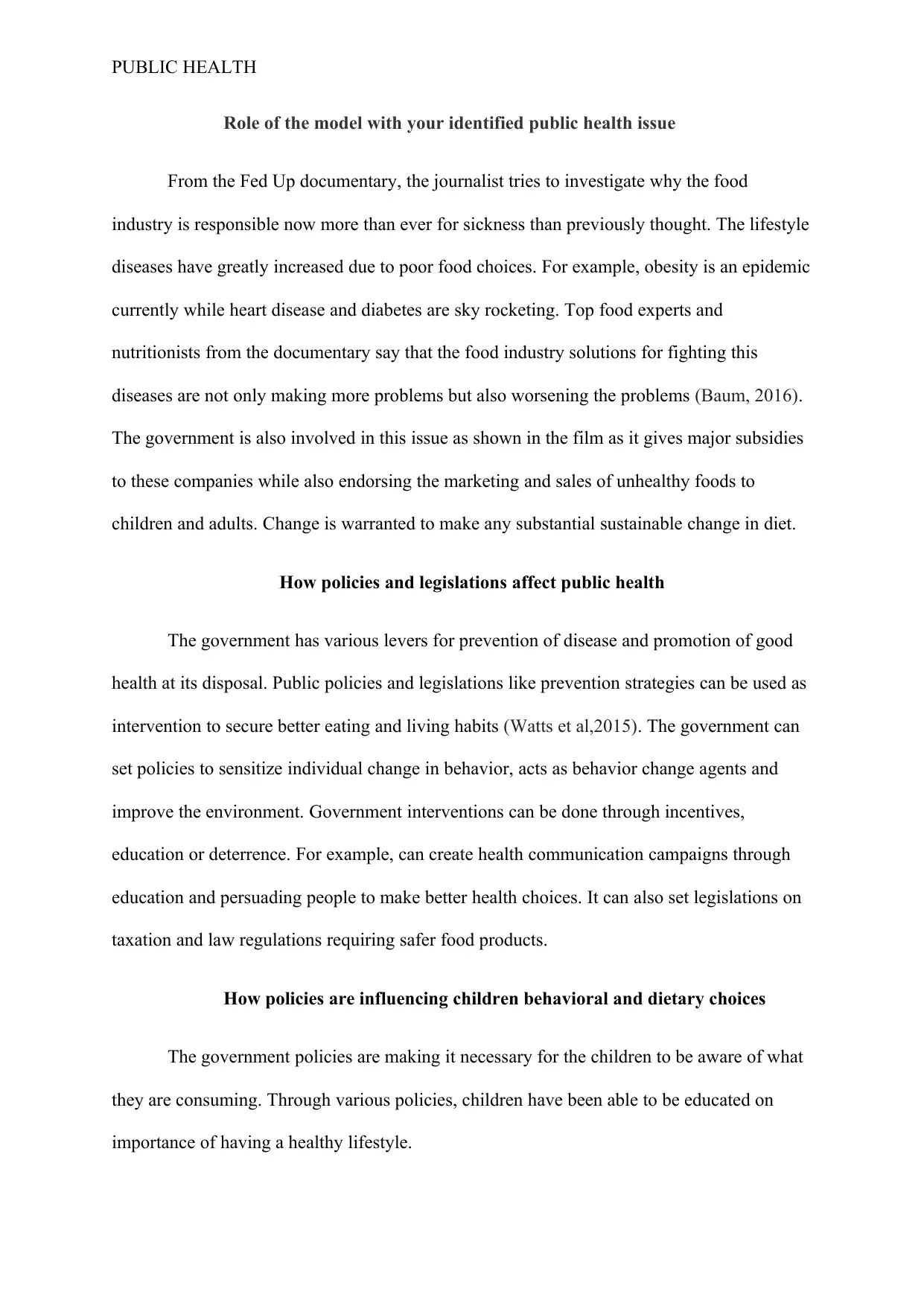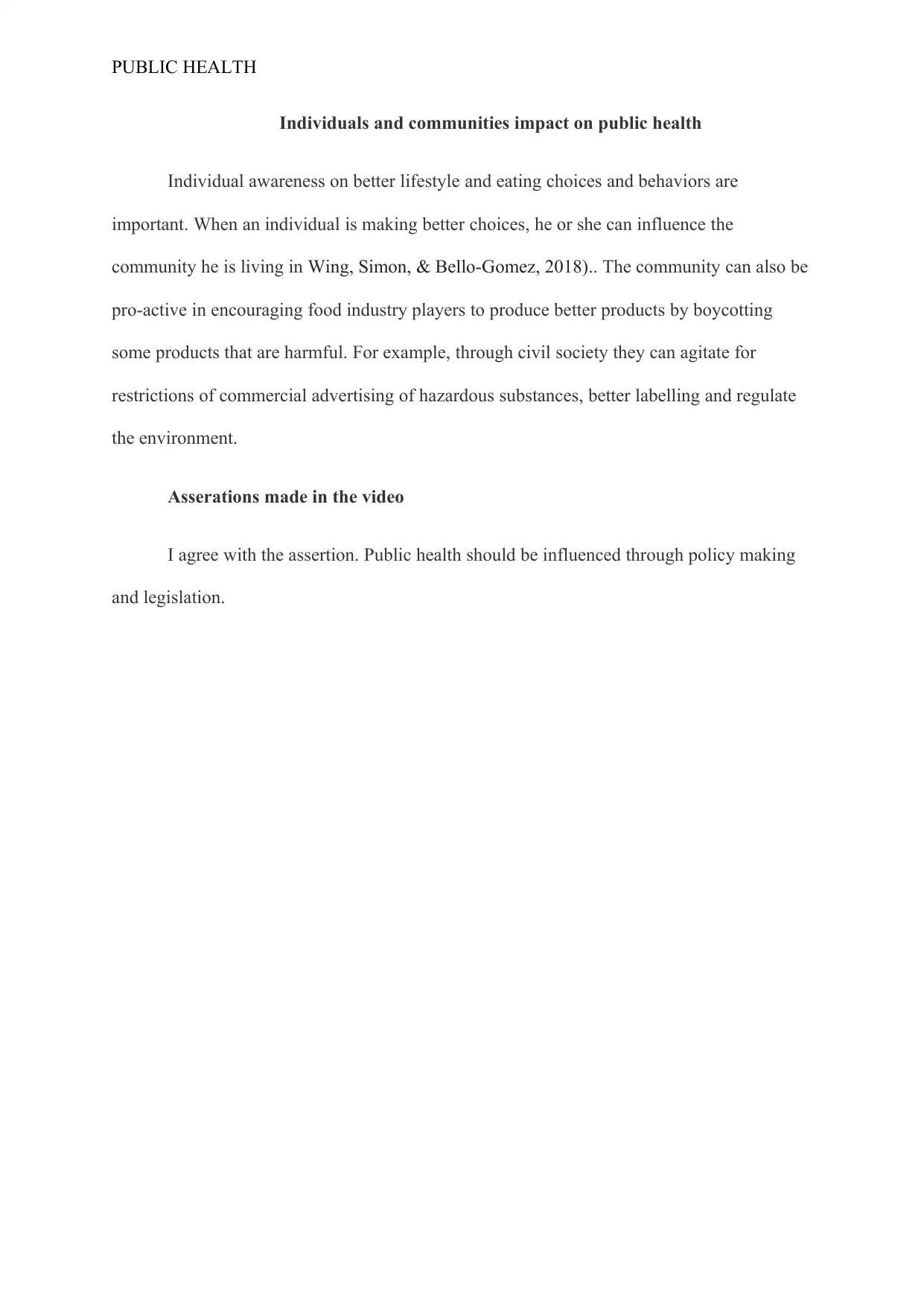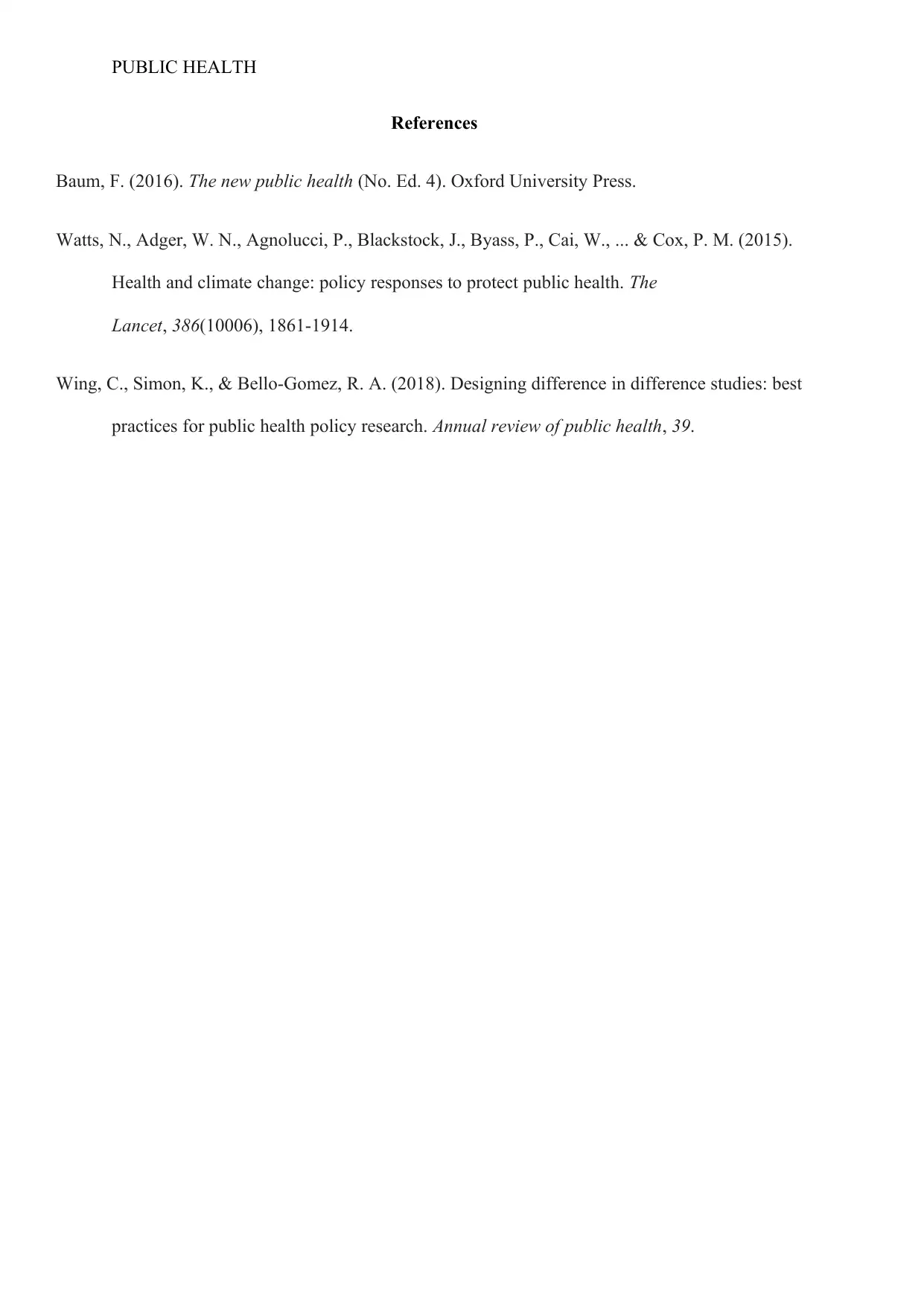Public Health Report: Analysis of Food Industry's Impact on Health
VerifiedAdded on 2022/10/04
|4
|571
|421
Report
AI Summary
This report examines the intricate relationship between the food industry and public health, focusing on the impact of the industry on lifestyle diseases such as obesity and diabetes. It analyzes the role of government policies and legislations in influencing public health, particularly through interventions like health communication campaigns, taxation, and regulations on food products. The report also explores how individual behaviors and community actions can influence public health, including advocating for healthier food options and restricting harmful advertising. The author agrees with the assertion that public health should be influenced through policy making and legislation. The report references academic sources, including Baum (2016) and Watts et al. (2015) to support its arguments. This report is available on Desklib for students seeking to deepen their understanding of public health issues and solutions.
1 out of 4










![[object Object]](/_next/static/media/star-bottom.7253800d.svg)